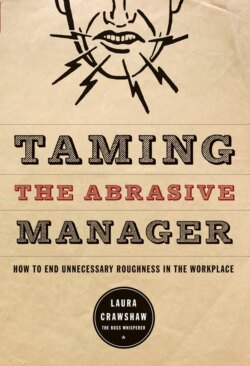Читать книгу Taming the Abrasive Manager - Laura Crawshaw - Страница 13
The Costs of Abrasion
ОглавлениеLet’s ignore the soft stuff for a moment and take a hard look at the scope and costs of organizational disruption caused by abrasive bosses. For those of you who need numbers, I offer these: A Gallup study of 2 million workers at 700 companies found that poor supervisory behavior was the main reason that employees quit or were less productive (Work & Family Connection, 2005). A study of superior-to-subordinate aggression in the United Kingdom concluded that close to 2.5 million UK employees considered themselves to have been victims of managerial aggression in the previous six months (Hoel & Cooper, 2000). Research conducted by the Center for Creative Leadership (Lombardo & McCall, 1984) reported that 74 percent of successful executives in three Fortune 100 corporations said they had had at least one intolerable boss, and another study (Spherion Corporation, 1999) showed that employees are four times more likely to leave bosses who are not considered ‘‘nice’’ (another word rarely used in a business context). Attrition of valued employees is just one of the prices paid. In the past decade researchers have explored other costs incurred by abrasive bosses: decreased morale and motivation resulting in absenteeism and lowered productivity (McCarthy, Sheehan, & Kearns, 1995), higher incidence of stress-related illnesses (Quine, 1999) and substance abuse (Richman, Rospenda, Flaherty, & Freels, 2001), increased number of legal actions alleging a hostile environment or discriminatory behavior (Leymann, 1990), and retaliatory responses, including sabotage (Laabs, 1999) and homicide (McLaughlin, 2000; Rayner, 1997).
Had enough? Do I really need to swamp you with more statistics to convince you that abrasive bosses take a serious toll on both employee and employer? Employers not only lose employees; they lose hundreds of thousands of hours of productivity while workers focus on the pain of abrasion instead of the tasks at hand. Think for a moment—how many hours have you seen coworkers spend around the coffee machine or behind closed doors processing the latest painful run-in with an abrasive boss? I have yet to see any formal research on the number of hours management (including human resource staff) devotes to abrasive boss-related issues, but those I have spoken with resent the ‘‘waste’’ (their word) of time that could be better spent on other concerns. I could devote many more pages to documenting the costs incurred by abrasive bosses, but the fact that you are reading this book suggests that you don’t need to be convinced—I suspect you’ve already paid a price.
